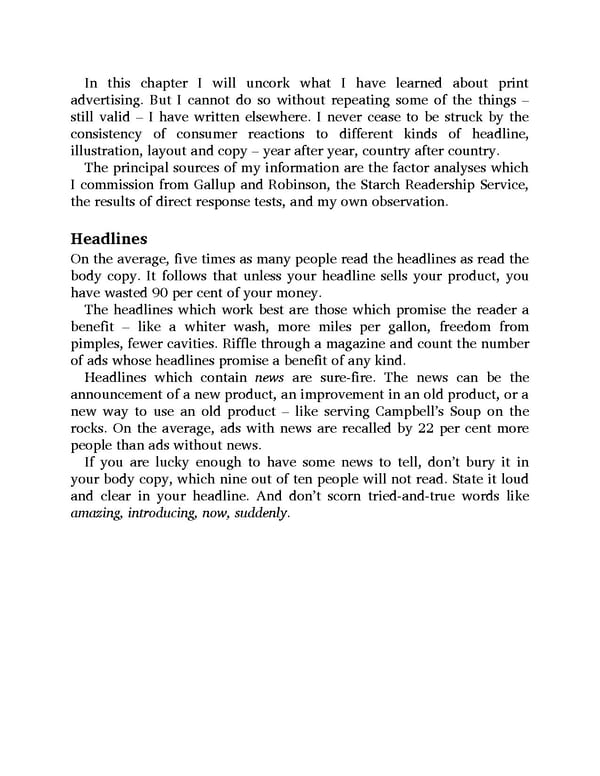In this chapter I will uncork what I have learned about print advertising. But I cannot do so without repeating some of the things – still valid – I have written elsewhere. I never cease to be struck by the consistency of consumer reactions to different kinds of headline, illustration, layout and copy – year after year, country after country. The principal sources of my information are the factor analyses which I commission from Gallup and Robinson, the Starch Readership Service, the results of direct response tests, and my own observation. Headlines On the average, five times as many people read the headlines as read the body copy. It follows that unless your headline sells your product, you have wasted 90 per cent of your money. The headlines which work best are those which promise the reader a benefit – like a whiter wash, more miles per gallon, freedom from pimples, fewer cavities. Riffle through a magazine and count the number of ads whose headlines promise a benefit of any kind. Headlines which contain news are sure-fire. The news can be the announcement of a new product, an improvement in an old product, or a new way to use an old product – like serving Campbell’s Soup on the rocks. On the average, ads with news are recalled by 22 per cent more people than ads without news. If you are lucky enough to have some news to tell, don’t bury it in your body copy, which nine out of ten people will not read. State it loud and clear in your headline. And don’t scorn tried-and-true words like amazing, introducing, now, suddenly.
 Ogilvy on Advertising Page 100 Page 102
Ogilvy on Advertising Page 100 Page 102